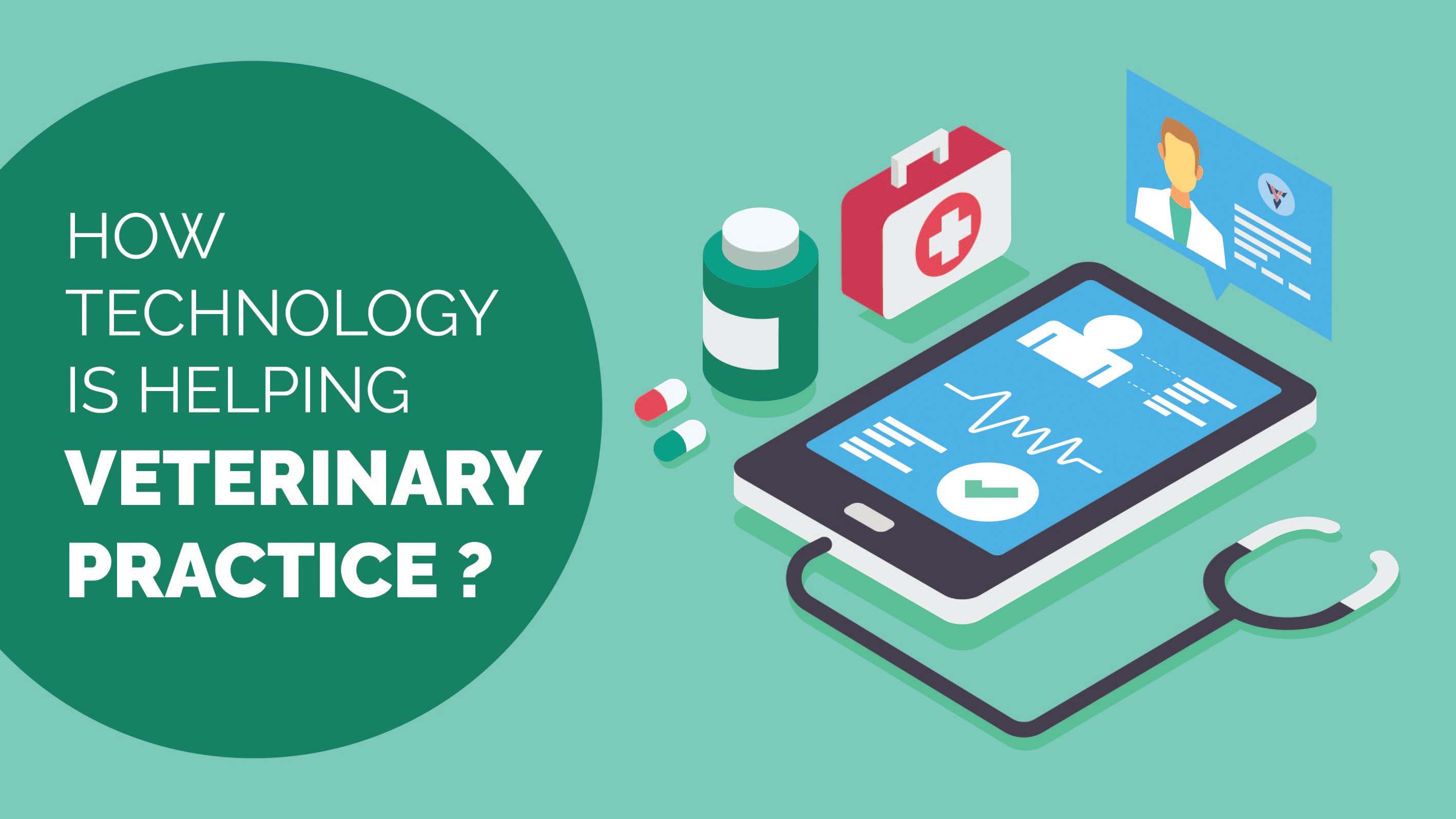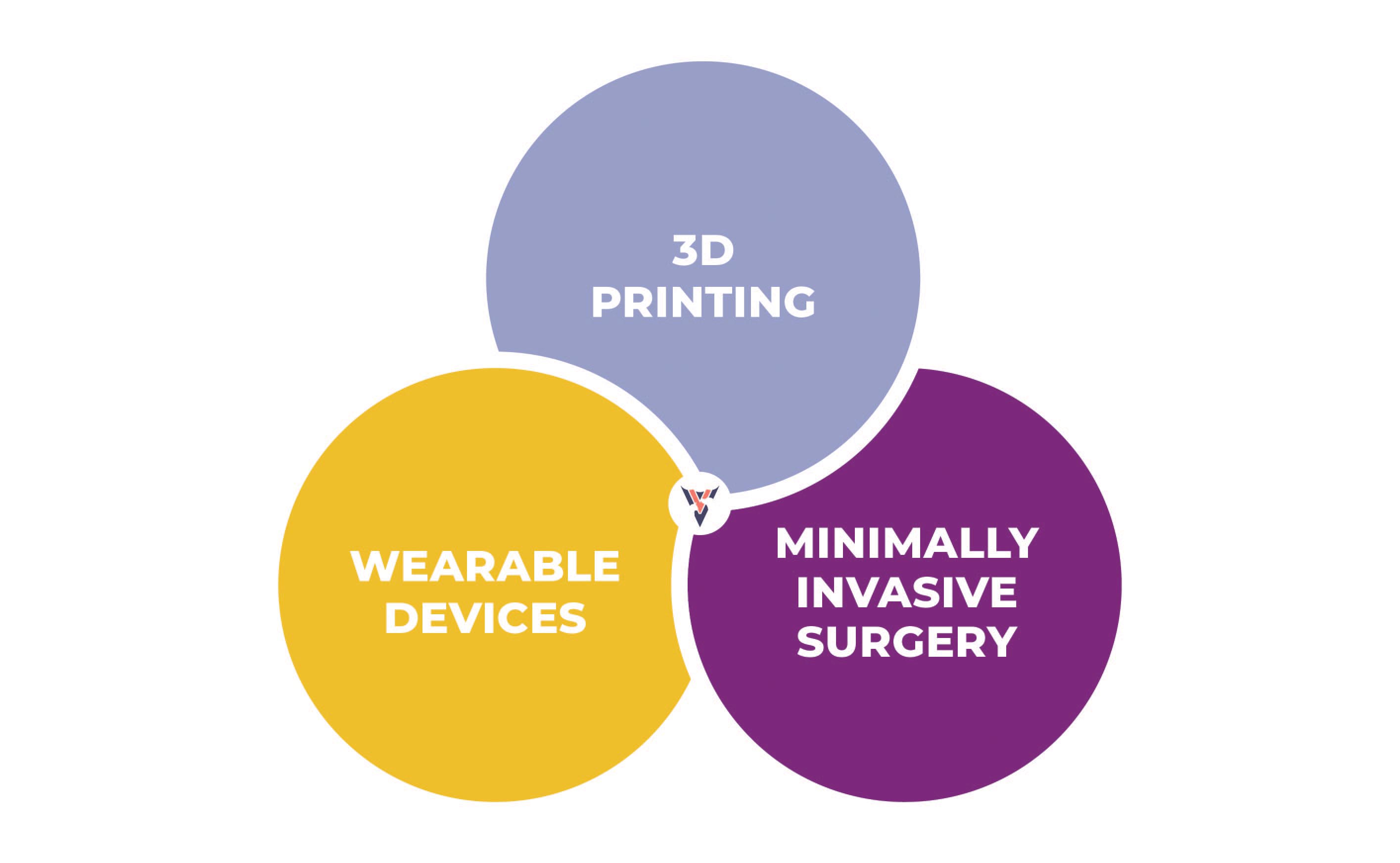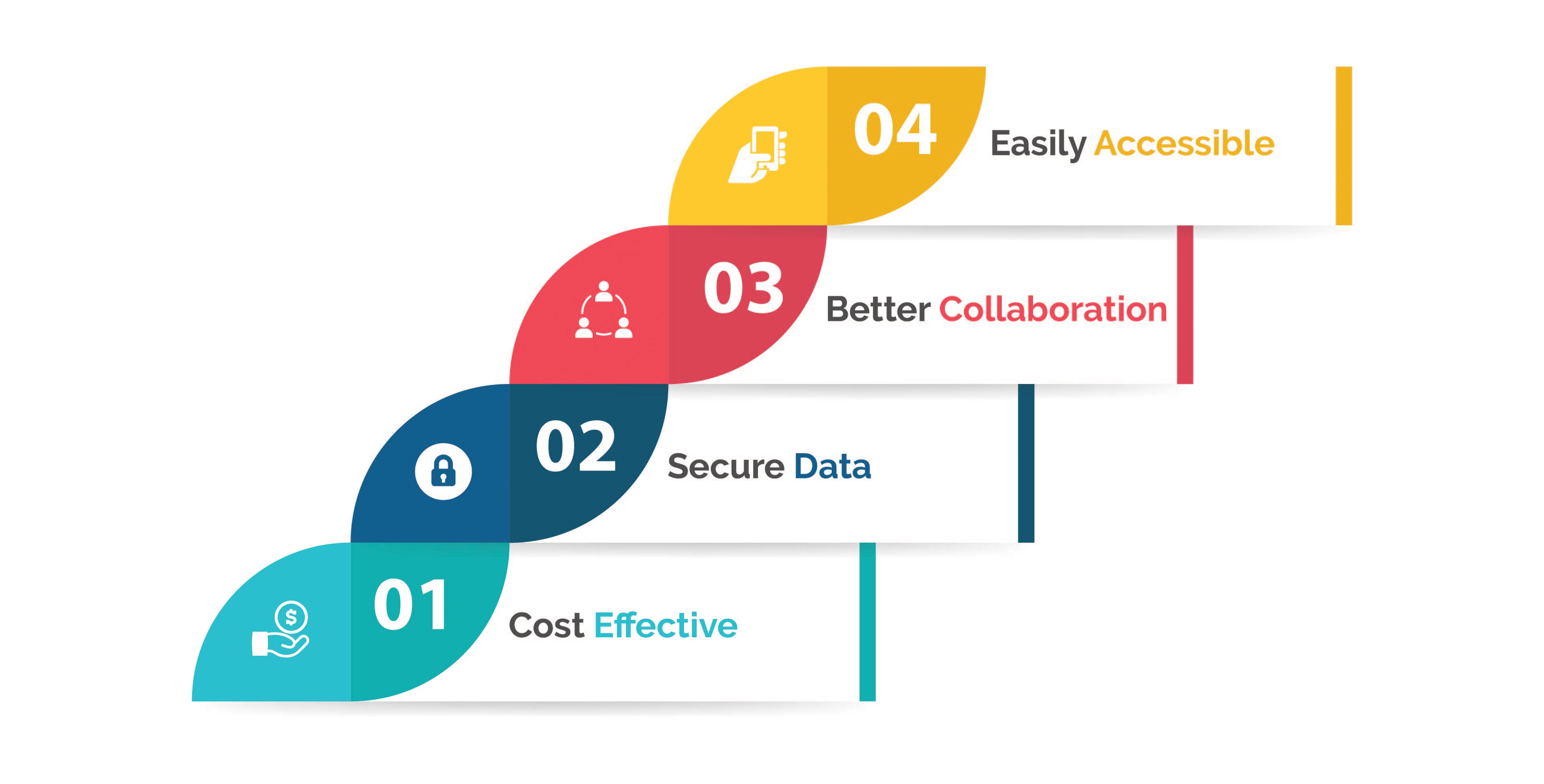
How Changing Technology is Helping Veterinary Medicine and Practice
Technological advancements have helped improve the quality of not just human life but also that of the animals dear to them.
Want to take your veterinary business to whole new levels and step into a transformative journey in veterinary medicine?
If yes, this is the right place for you; this article discusses how you can use the latest veterinarian technology and trends to grow your veterinary business!
In the ever-evolving landscape of veterinary medicine, a thrilling revolution is underway, one where the power of technology intertwines seamlessly with the heartfelt compassion of veterinarians. With multiple veterinary technology breakthroughs, you can handle complex medical procedures effortlessly and ensure our furry friends lead lives with endless wagging tails. The importance of technology in veterinary care just cannot be ignored any further, given how positively it impacts the lives of animals and their owners.
In this blog, we’ll discuss in detail the latest veterinary technology trends that guide the hands of veterinarians.
We’ll also talk about other diagnostic advancements, wearable technologies, AI, robotics, automation, etc., that assist veterinarians in their field.
Technological Advancements in Veterinary Medicine
Over the past decade or so, veterinary medicine has seen many changes with respect to diagnosis, treatment, and care. MRI (Magnetic Resonance Imaging), ultrasound scans, and laparoscopy that were used solely on human beings are now the norm for treating pets and other animals as well. Following suit are digital radiographs that replace X-ray films for digital communication, thorough assessment, and effective treatment. Digital dental X-rays and advanced oral surgery instruments too follow this pattern, enabling veterinarians to improve oral health in pets. Newer inventions further address health issues in pets not just within clinics, but on an all-around basis for prevention and better care.

1. Diagnostic Advancements
Ever wondered how veterinarians can peer inside our beloved pets' bodies to uncover hidden ailments? Well, the answer lies in two groundbreaking technologies: Precision Imaging and Molecular Diagnostics. Let’s understand how these technologies in veterinary medicine are revolutionizing this space, making diagnoses quicker, more accurate, and ultimately life-saving.
Precision Imaging:
Imagine having X-ray vision, but for animals! Thanks to digital radiography, ultrasonography, and CT scans, veterinarians can do just that. These tools allow them to see deep inside organs and tissues with unmatched clarity. Digital radiography detects fractures, cancers, and arthritis, while ultrasound examines the heart, liver, kidneys, and reproductive organs. CT scans go even further, revealing the brain, spine, and bones, aiding in the diagnosis of cancers and spinal cord injuries. These technologies act as excellent glasses, helping vets diagnose cancer, heart disease, and musculoskeletal issues early on.
Molecular Diagnostics:
Think of this as exploring an animal’s genetic blueprint. Molecular diagnostics, using PCR (Polymerase Chain Reaction) and NGS (Next-Generation Sequencing), analyze DNA and RNA, pinpointing genetic defects and infectious diseases. PCR acts as a molecular magnifying glass, amplifying DNA or RNA to detect viruses, bacteria, and fungi. Diseases like parvovirus, distemper, and Lyme disease are no match for their precision. NGS, on the other hand, delves even deeper, sequencing an organism's entire genome. This helps identify genetic mutations linked to diseases, paving the way for advanced diagnostics like those for the canine influenza virus and the feline immunodeficiency virus.
2. Telemedicine in Veterinary Care
Do you often have to mentally struggle with the fact that your vet’s clinic is miles away, and even for a bit of consultation, you have to wait hours? Here’s telemedicine—a veterinary technology like having your vet in your pocket! Now, there’s no need for you to travel long distances—you can virtually connect with your vet from the comfort of your home. This is done in two ways: remote consultations and telehealth apps.
Remote consultations:
With remote consultations, you and your pet can meet your vet on-screen. Irrespective of where you live, you can virtually connect and get your pet assessed online. It’s like literally having a mini clinic that you can access anytime, anywhere!
Telehealth Apps:
Now, here’s where the new technology in veterinary medicine truly shines. Telehealth apps for vet owners allow you to monitor vital signs, note down symptoms, and even send photos or videos of your pet to your vet. One of the most popular telehealth applications is VETport, which provides essential feedback and recommends the best course of action for your pet—it’s a game-changer!
3. Robotics and Automation
Ever wondered what the future of veterinary medicine looks like? Well, buckle up because it's all about robots and high-tech mechanization turning the tables in veterinary medicine! This will largely be achieved by surgical robots and robotic rehabilitation.
Surgical robots:
With the help of surgical robots, surgeries will be done much more safely and precisely while leaving minimal scars. These robots, yes, robots, are stepping into the operating rooms. They make surgeries less scary and more successful. Compared to traditional surgeries, they ensure better care without the added stress.
Robotic Rehabilitation:
Robotic rehabilitation is like having a personal trainer who understands every wag of your pet’s tail or every purr. These robots can analyze how your pet moves and provide tailored physical therapy and workouts, making their recovery smoother than ever.
4. Wearable Technology
Wearable technology and IoT applications are groundbreaking veterinary science technology that will make all the difference in vet medicine! The high-tech wearable technology comprises health monitoring devices and IoT applications.
Health monitoring devices:
Health monitoring tools, such as smart collars and activity trackers, operate as personal health assistants for your pets. They monitor everything, including heart rate and daily steps, using their cutting-edge technology, enabling you to spot health risks early on.
IoT applications:
IoT apps give proactive health alerts in real-time by remotely inspecting your animals/livestock every minute. Even from a distance, you can keep an eye on, control, and care for your animals to maintain their safety and well-being.
5. 3D Printing in Veterinary Medicine
The latest veterinary technology, like 3D printing, improves pet quality of life. 3D printing has transformed veterinary care with personalized prostheses and orthopedics, improving mobility and surgical models guiding skilled hands. Here’s how it’s transforming this space:
Custom Prosthetics and Orthopedics:
For animals with orthopedic injuries or missing limbs, 3D printers make custom limbs and supports. These prostheses are customized for each animal, ensuring optimal movement and function. 3D printing enables your pets to walk, run, and play again, whether they need a leg or a supportive orthosis after a fracture.
Organ and Tissue Models:
Complex procedures are planned and performed using 3D-printed models made from various materials, including living cells. Doctors and pet owners use these models to understand operations. Let’s say a surgeon plans a delicate cardiac surgery on a 3D-printed heart model or rehearses a liver transplant on a lifelike liver replica. As a pre-show rehearsal, it ensures every action is perfect!
6. Artificial Intelligence in Diagnostics
Artificial intelligence is revolutionizing every domain, especially veterinary medicine. By creating more innovative tools and increasing test accuracy, AI provides accurate and efficient healthcare. Here’s how artificial intelligence in diagnostics helps veterinarians:
Machine Learning Algorithms:
ML algorithms analyze massive data sets to find patterns and trends humans overlook. This data informs predictive models to identify animals at risk for specific diseases. Besides, they aid in image recognition, which detects any irregularities.
AI-Powered Decision Support Systems:
AI-powered decision support systems are clever tools that give vets case-specific counsel, recent research, and evidence-based advice. With this knowledge, veterinarians can create customized preventative care regimens to keep pets healthy.
7. Nanotechnology in Drug Delivery
Ever heard of a breakthrough so small it’s almost invisible yet so powerful it could change the way you care for your beloved furry friends? Enter nanotechnology, the hidden champion making waves in the world of veterinary medicine, especially in the battle against diseases like cancer!
Targeted Drug Delivery Systems:
Medicine that hits the bullseye, targeting diseases without the nasty side effects. Sounds like magic, right? Thanks to nanotechnology, it's a reality! These tiny wonders, known as nanoparticles, take medications straight to the trouble spots in your pet’s body. This means fewer side effects and more potent treatments. For pets facing cancer, it means delivering chemotherapy right where it's needed the most, making the fight against cancer more effective and less distressing.
Nanoparticles in cancer treatment:
Nanotechnology delivers chemotherapy directly to cancer cells. This slow, strategic approach doesn't just wipe out more cancer cells; it also reduces the need for frequent treatments. Whether it's lymphoma, osteosarcoma, or mast cell malignancies, these nanoparticles are proving to be effective in cancer treatment.
8. Advanced Monitoring Equipment
Veterinary medicine increasingly uses advanced monitoring technology, as this helps physicians monitor animals' vital signs and other physiological factors. This information helps make better patient care decisions and spot issues early. It’s mainly done by two standard processes: Anesthesia monitoring and continuous vital sign monitoring.
Anesthesia monitoring:
During surgeries and anesthesia procedures, animals are carefully watched over through anesthesia monitoring. By assessing heart rate, respiration, blood pressure, and oxygen levels, it provides real-time updates, empowering veterinarians to maintain stable vital signs—thus, reducing risks and ensuring optimal outcomes. It's like having a safety net tailored just for the animals, making their medical journeys smoother and safer.
Continuous vital sign monitoring:
In the bustling world of ICUs and animal-monitoring facilities, continuous vital sign monitoring takes the spotlight. These monitoring devices not only detect patterns but also alert veterinarians to potential issues before they escalate. It's early intervention at its finest, ensuring complications are kept at bay and the animals receive the best care possible.
9. Virtual Reality for Animal Behavior Studies
Virtual reality (VR) is fast-changing in several industries, including veterinary medicine. VR is used to investigate animal behavior and alleviate vet stress and is conducted using the following methods:
Studying animal responses:
With VR, scientists control animal behavior and observe their reactions to various stimuli—from predators to new experiences. It helps explore how animals respond to threats, adapt to environmental shifts, and even learn new skills. VR opens a window into their world, revealing the intricate tapestry of animal cognition and learning like never before.
Reducing stress in veterinary care:
VR isn't just for humans; it's a stress-buster for pets too! During nerve-wracking procedures like blood draws and X-rays, VR acts like a magical calming spell. It envelops the animals in serene virtual landscapes, easing their anxiety and reducing suffering. Researchers are crafting tailor-made VR experiences to teach pet animals the art of anxiety management, making vet visits a breeze.
10. Veterinary Software Solutions
Veterinary care is increasingly dependent on software solutions. These systems can help vets streamline operations, maintain patient information, and interact with clients. Below are some veterinary software solutions:
Practice Management Software:
A seamless, organized vet clinic where appointments, billing, and inventory management happen effortlessly—Practice Management Software (PMS) like VETport is becoming the superheroes of efficiency! PMS swoops in to automate those time-consuming administrative tasks, letting vets focus on what they do best: caring for their fur babies.
Electronic health records:
Remember the days of paper files? Well, say hello to the digital revolution with Electronic Health Records (EHRs)! These virtual treasure troves store your pet's medical history, immunizations, and treatment plans securely. No more rifling through paperwork; vets have instant access to all the essential details, ensuring your pet gets the tailored care they deserve.
Developments in Veterinary Practice Management
Progressions in technology have helped not just veterinary medicines, but also veterinary practice. veterinary computer programs, though not new to the market, has received a facelift with most software providers moving to the cloud. The advantages here are many.

1.Easily accessible: When patient data and medical records get stored in the cloud, veterinarians can retrieve them in the click of a button using any internet-enabled device. This becomes extremely crucial when medical records need to be accessed on the go or during an emergency case.
2.Better collaboration: Caring for pets requires teamwork. Electronic medical records stored on the cloud allow all team members to access and work on the latest data, even when they are split across different locations or time zones. Newer veterinary practice management software allows clinics and hospitals to directly access results from diagnostic laboratories, thus bringing down the treatment time drastically and making life easier for pet owners. Such sharing of information through the web also improves treatment efficiency and brings down the possibility of a medical error.
3.Secure data: Data stored in a cloud-based veterinary practice management software gets saved, backed-up, and restored to an off-site location, thus preventing theft or damage due to hardware crashes, calamities, and so on.
4.Cost-effective: Cloud-based practice management software saves veterinarians the time, effort, and money spent on servers, program installations, updates, or on-site consultants. Most systems offer flexible pricing plans suitable to the size and needs of the practice, which also results in quicker and better return on investments.
Computer software systems, advanced medical technologies, and enhanced web marketing strategies are driving the global veterinary services market, which is now poised to reach $200 billion in 2020. Thus, adoption of newer technologies, in veterinary medicine as well as in veterinary practice, becomes indispensable to veterinarians, clinics, and hospitals looking to grow their practice.
Conclusion
Technological advances are increasingly changing veterinary medicine. Diagnostic accuracy, therapy development, and patient care are improved by emerging technologies. AI-powered diagnostic tools could help veterinarians diagnose diseases earlier and more correctly, improving patient outcomes. Nanotechnology-based drug delivery systems could improve animal medicine delivery and reduce side effects. VR could speed up and ease animal recovery from injuries and surgery.
Key Takeaways
The primary takeaways from this article about veterinary medicine's technological achievements are:
- AI is improving diagnostic tools and test accuracy to assist veterinarians in making decisions and developing novel treatments.
- Modern equipment is better at monitoring animal vital signs and other physiological traits. This information improves patient care and early detection.
- VR is used to study animal behavior and reduce veterinary stress. Researching how animals see and interact with the world can help doctors treat patients.
- Veterinary software enhances efficiency, patient records, and client communication. Modern vets need software.
- New nanoscale imaging and drug delivery devices are being developed.
Related Articles3. 11 ways to increase feline visits to your veterinary practice

